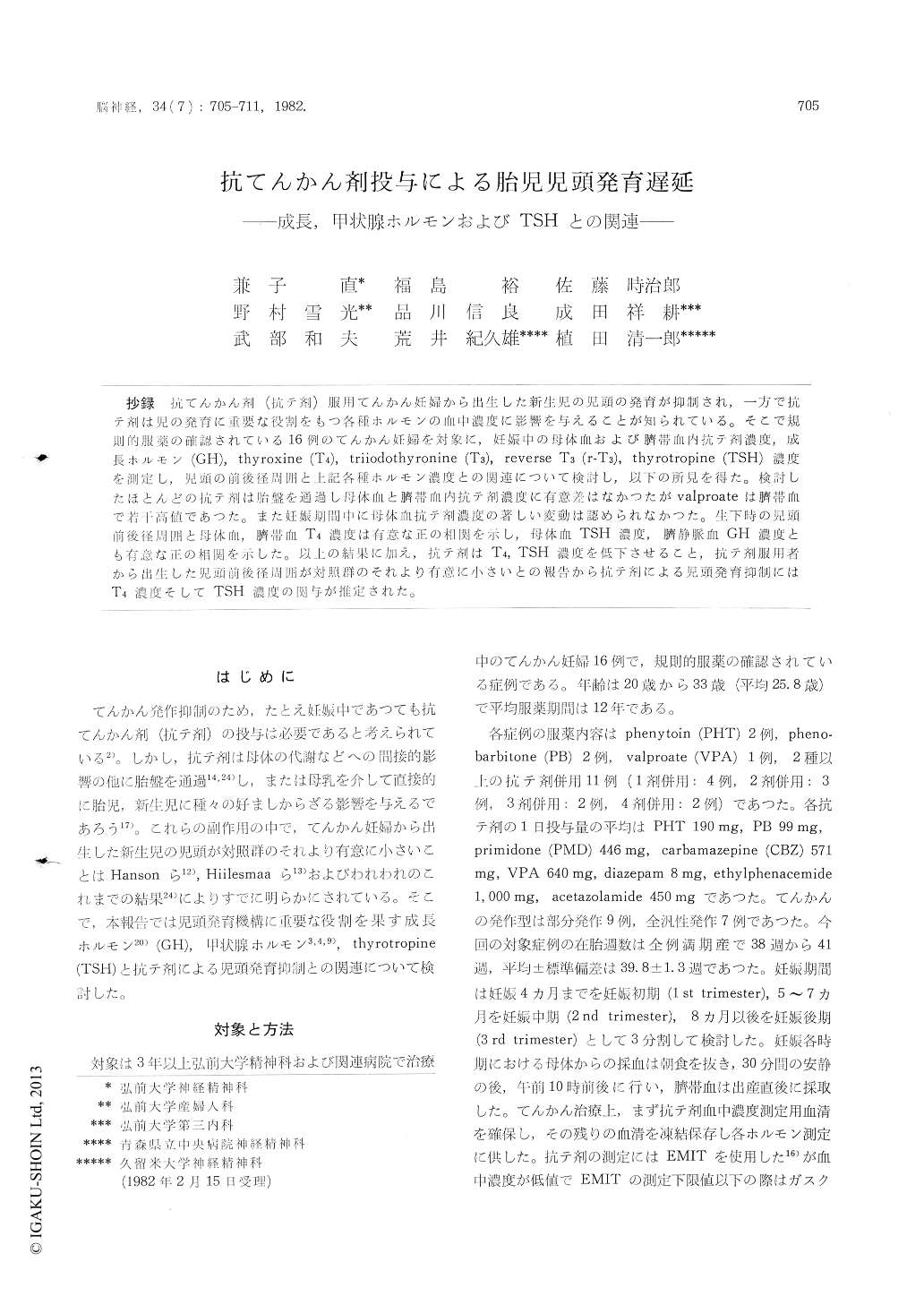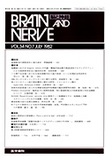Japanese
English
- 有料閲覧
- Abstract 文献概要
- 1ページ目 Look Inside
抄録 抗てんかん剤(抗テ剤)服用てんかん妊婦から出生した新生児の児頭の発育が抑制され,一方で抗テ剤は児の発育に重要な役割をもつ各種ホルモンの血中濃度に影響を与えることが知られている。そこで規則的服薬の確認されている16例のてんかん妊婦を対象に,妊娠中の母休血および臍帯血内抗テ剤濃度,成長ホルモン(GH),thyroxine (T4),triiodothyronine (T3),reverse T3(r-T3),thyrotropine (TSH)濃度を測定し,児頭の前後径周囲と上記各種ホルモン濃度との関連について検討し,以下時の所見を得た。検討上したほとんどの抗テ剤は胎盤を通過し母体血と臍帯血内抗テ剤濃度に有意差はなかつたがvalproateは膀帯血で若干高値であった。また妊娠期間中に母体血抗テ剤濃度の著しい変動は認められなかつた。生下時の児頭前後径周囲と母体血,臍帯血T4濃度は有意な正の相関を示し,母体血TSH濃度,臍静脈血GH濃度とも有意な正の相関を示した。以上の結果に加え,抗テ剤はT4,TSH濃度を低下させること,抗テ剤服用者から出生した児頭前後径周囲が対照群のそれより有意に小さいとの報告から抗テ剤による児頭発育抑制にはT4濃度そしてTSH濃度の関与が推定された。
To study mechanisms of inhibitory action of antiepileptic drugs on fetal head growth, 16 epileptic mothers undergoing long-term treatment with various antiepileptic drugs and their infants were prospectively studied. All mothers studied in this trial were from a middle socioeconomic class and they delivered at term.
The serum levels of antiepileptic drugs were determined by a GLC method or EMIT. Growth hormone, TSH, T4, T3 and reverse T3 (r-T3) concentrations were determined by commercial kit method. Blood samples for hormone estimation were stored at 20℃, assayed in duplicate and in a single run to minimize the total variation.
In the ranges of the concentrations obtained in this study, there was not a significant reduction in serum antiepileptic drug concentrations including phenytoin, phenobarbitone, carbamazepine, primi-done and valproate during pregnancy.
The similarity of maternal and umbilical serum levels of antiepileptic drugs except valproatereflects an equilibrium state established during long-term administration of the drugs. The serum levels of valproate were higher in the samples obtained from umbilical artery than those in maternal serum.
All of the mothers in this trial had no clinical evidence of hypothyroidism. GH, r-T3 and TSH levels in cord blood samples were significantly higher than those in maternal serum. On the contrary, T3 levels were significantly lower and T4 levels were slightly lower in cord blood samples than those in maternal serum.
There was a significant positive correlation be-tween head circumference of infant and T4 con-centration in maternal serum of the third trimester and the cordblood sample, TSH concentration both in the second and the third trimesters and GH concentration in the umbilical vein sample were also significantly positively correlated with headsize.
On the other hand, the levels of both T3 and r-T3 did not correlate statistically significantly with the head size.
In a previous study, we reported that antiepileptic drugs markedly depressed T4 concentration in maternal and cord serum, TSH concentration in maternal serum, and slightly deperssed GH in cord blood, but not T3 nor r-T3 concentrations. Accor-dingly, it is suggested that antiepileptic drug's inhibitory action on fetal head growth is at least partly mediated by the decreased T4 concentration due to maternal antiepileptic durg use. Although maternal GH does not cross the placenta, the drugs reduced GH concentration in cord blood. It is therefore suggested that fetal GH may also be involved in the inhibitory action of antiepileptic drug on the fetal head growth.

Copyright © 1982, Igaku-Shoin Ltd. All rights reserved.


